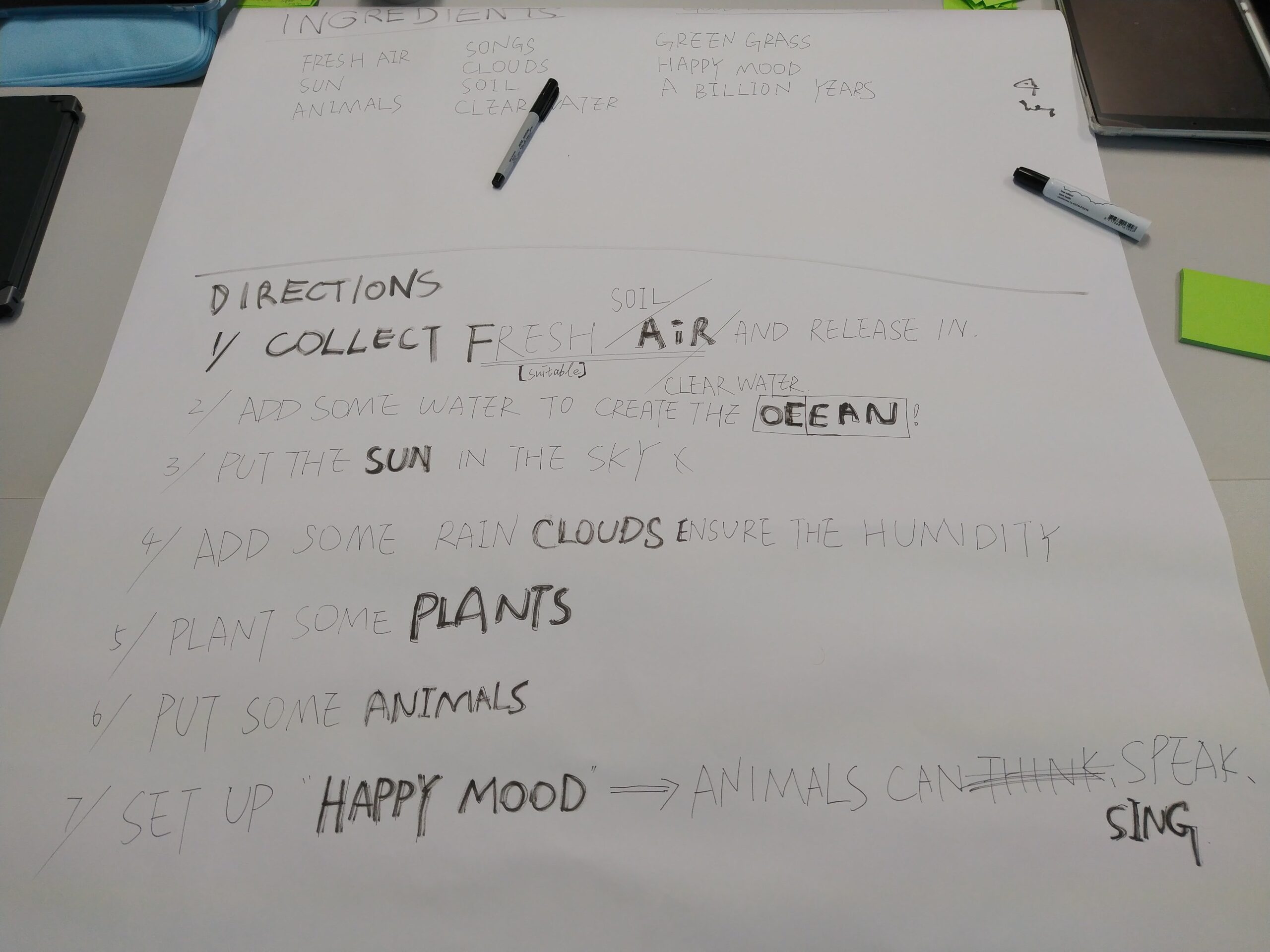Sprint 1 P2P_Reflection
https://miro.com/app/board/uXjVPVcz_FE=/
Basho’s Covenant
The first week of class was creating our Basho’s Covenant. Each of us built our own personal covenant individually. I needed to think the various relationships of teamwork and fill them in four quadrants which were positive, negative, ideal and prohibited. And then I met with my group and built the covenant together. We first added the contents we have written into Miro and explained to our peers. In this part, each person also completed independently. Next, we divided into four groups, each working on a quadrant to organize the content. Finally, we integrated everyone’s ideas to complete the covenant.

Make Gold
The second week of class was a workshop of Make Gold. In this class, each of us thought about the meaning and characteristics of gold individually. And then every group thought together about ingredients and directions of making gold (like a recipe) and wrote them on a poster. At the end, we saw what other groups have written and gave them feedbacks. The class was divided into three groups. Interestingly, there was one group that made gold in a very similar way to our group. We all made in a playful and creative way. Conversely, the content of the other group was serious and academic.
These two weeks of classes were substantial and interesting. The cooperative learning teaching method is student-centered. The teacher is the auxiliary role, and the main task is to guide and supervise the progress of the course. I think the biggest challenge is that we were just getting to know our peers, so we are not familiar with each other. Even so, everyone had the courage to express their ideas, cooperated with each other and completed the assignments smoothly. I think it’s very valuable that peers can trust each other like this, and I’m also very happy that my group members are all friendly and nice.
Cooperative learning in groups is conducive to improve the performance of peers and is an efficient and high-quality learning method. Through group activities, we discuss with each other, no longer rely on teachers, grow our ability to think and solve problems independently. It fully mobilizes our enthusiasm for learning in all aspects, and let everyone participate in learning. In such a process of participation and discussion, the knowledge absorbed by us is not limited to what the teacher taught. For each knowledge point, because it is discovered by our own discussion, it will also be remembered more firmly. In this way, the results can also be elevated.
Group learning enhances our communication skills and cultivates team spirit. In group cooperative learning, each person has a division of labor and has his own specialties. Everyone can actively participate in, give full play to our own advantages and specialties, and improve ourselves on the basis of helping our peers, which not only inspires others, but also helps ourselves. Through the mutual help, emotional and spiritual exchanges among the members, I also improved my social skills and experienced the joy of being accepted by others. Our group becomes more and more a collective, so that each person shares weal and woe, and awakens the collective consciousness of group.




Good post Jing-Ting. You focus mainly on the way we are learning in this course, presenting a well considered overview of P2P working. It’s heartening to see that you feel this is working for your group. I wonder what might not be working so well – is there anything you’d change about the peer methods so far? I’m also wondering what you made of the first two workshops, particularly Make Gold. What did you get from that at the time; what will you think of it in a few weeks?
The author’s reflections on making gold are comprehensive, as well as having his own understanding of how collaborative learning works, which I think is excellent. I agree with the author’s views on collaborative learning, but I think it could be thought about more critically. I think it is a very good article though.